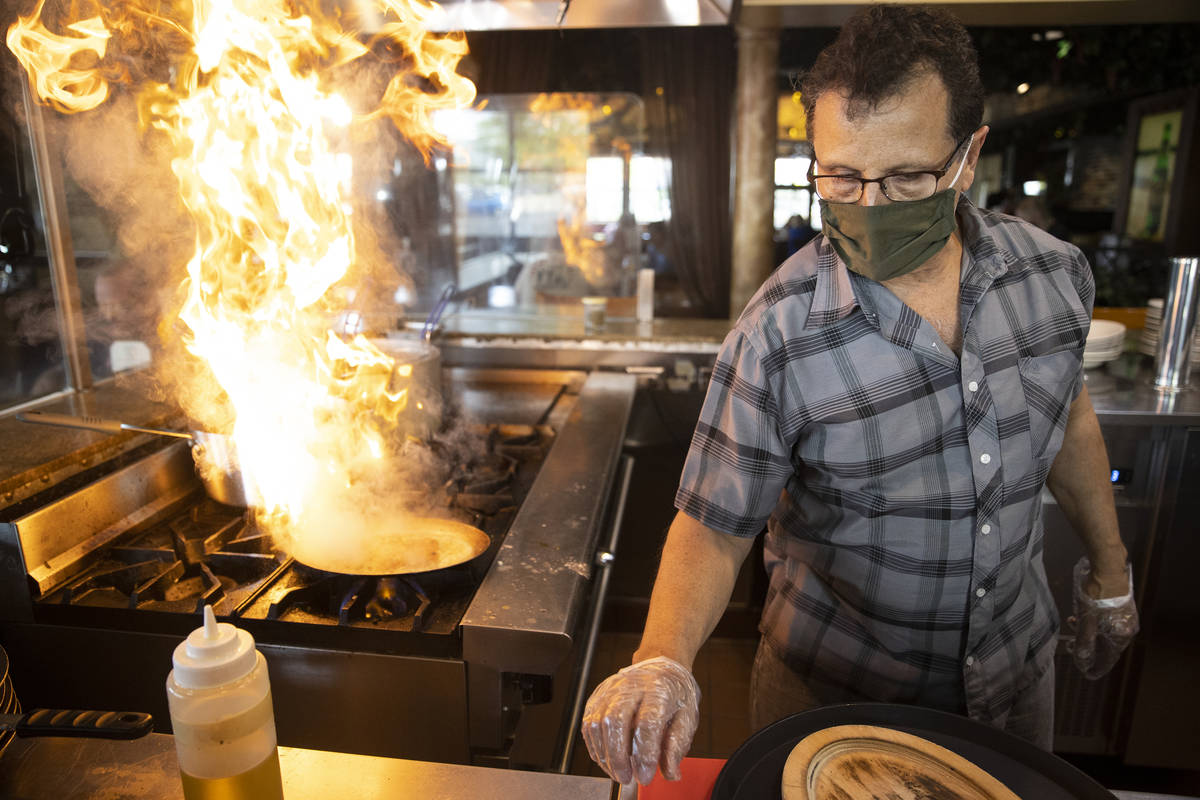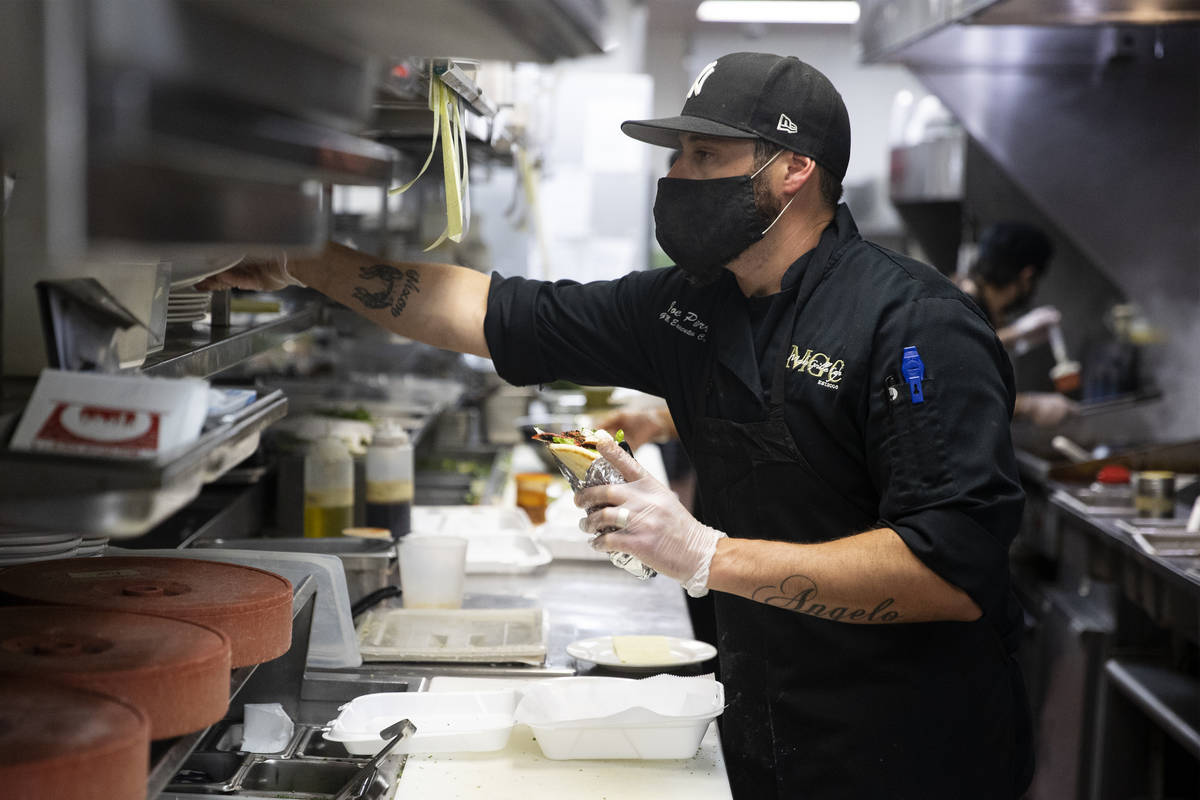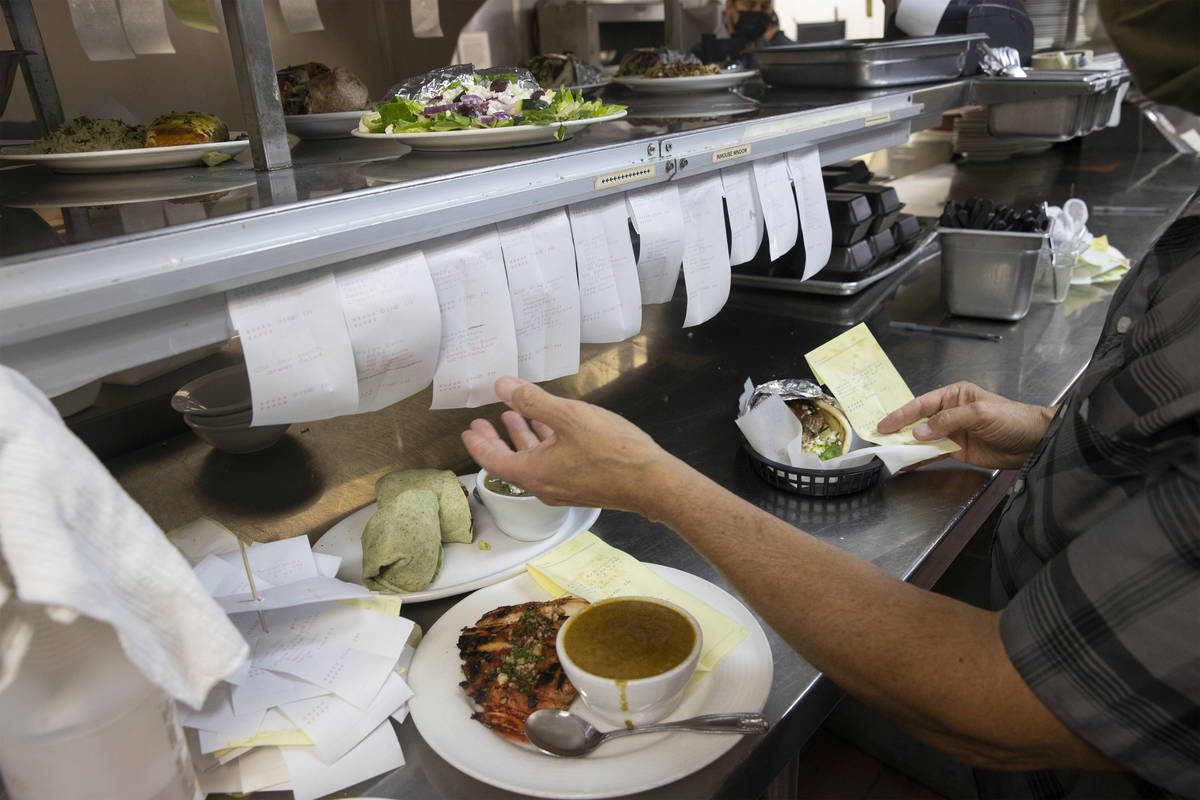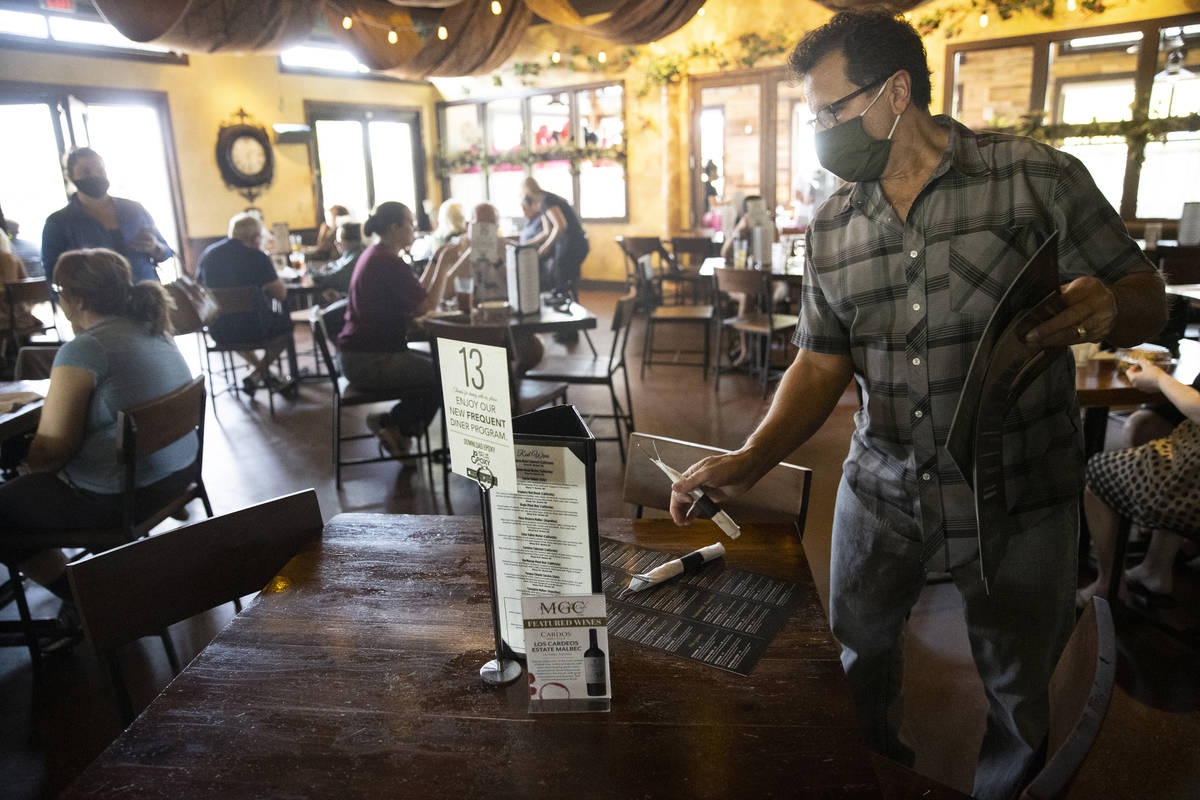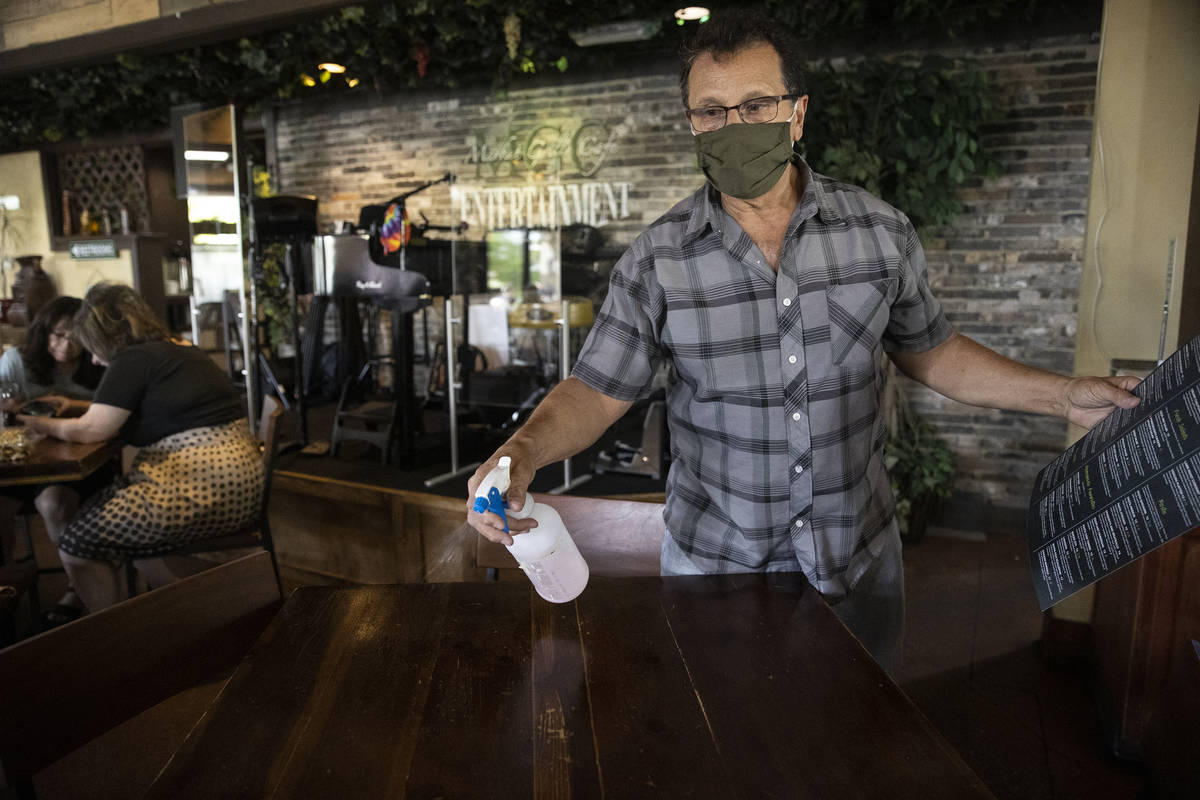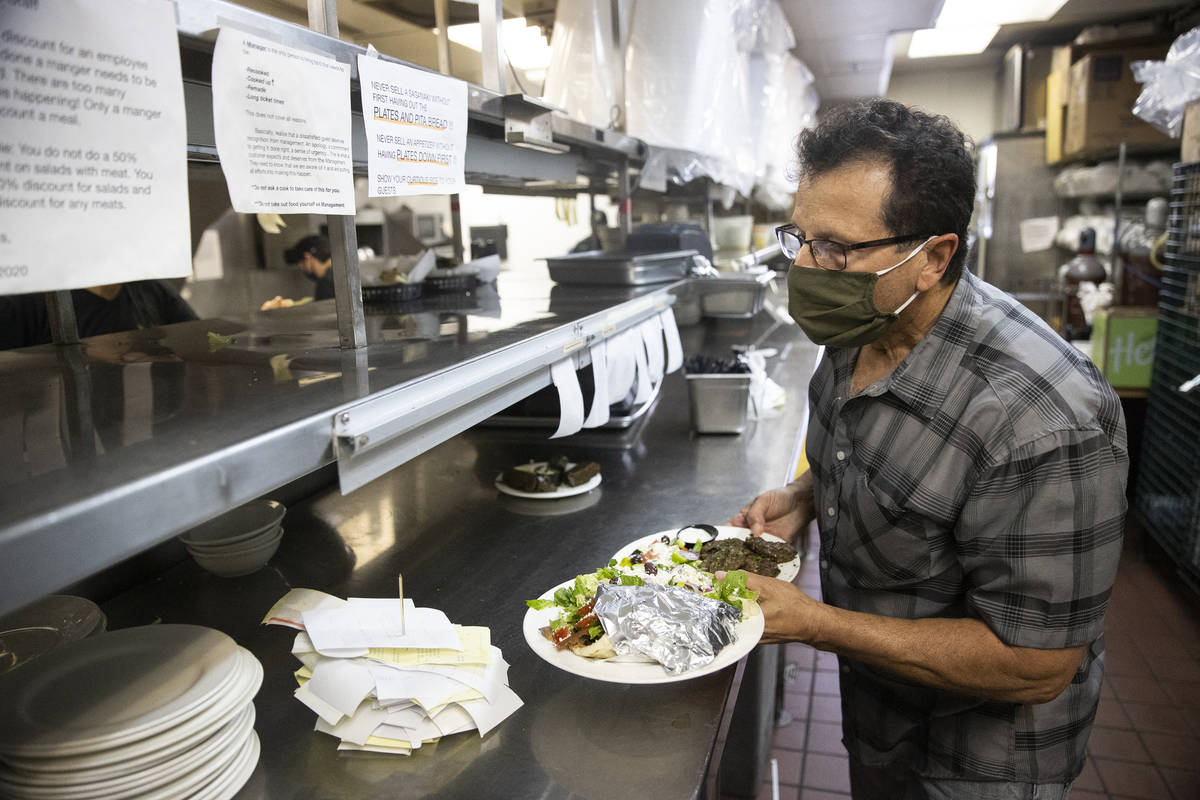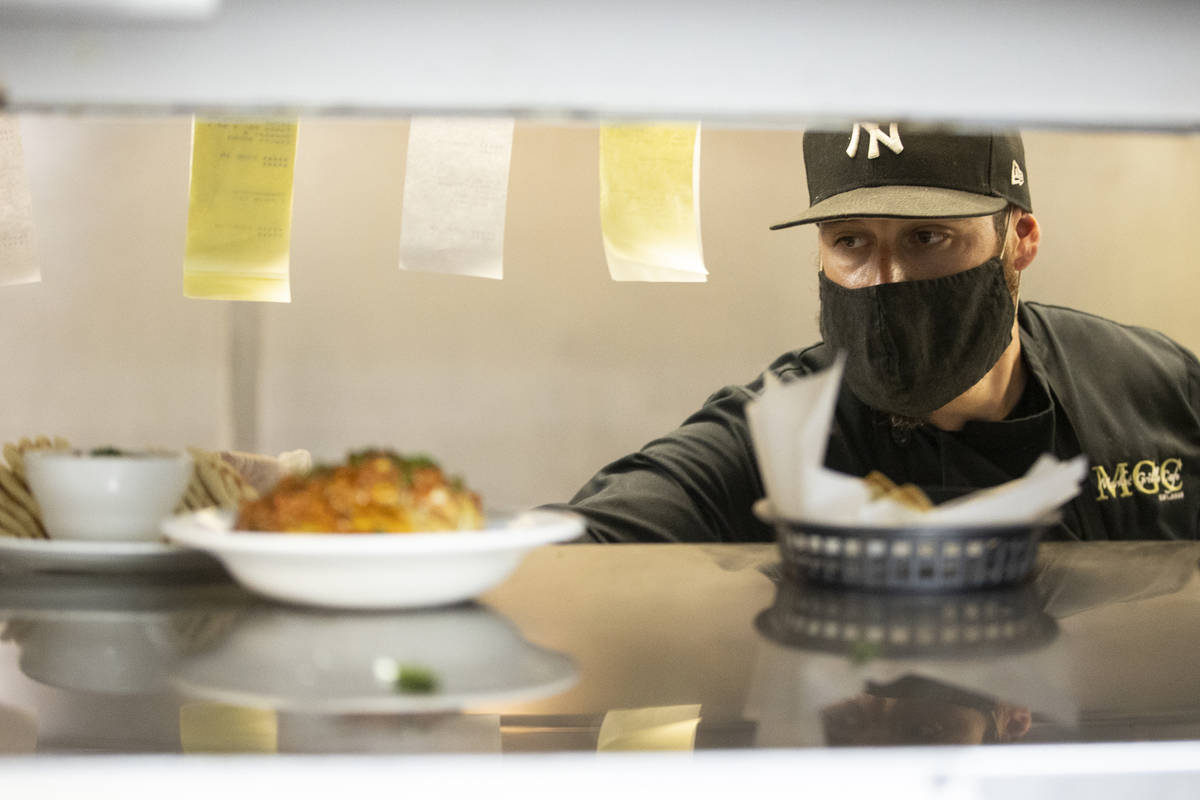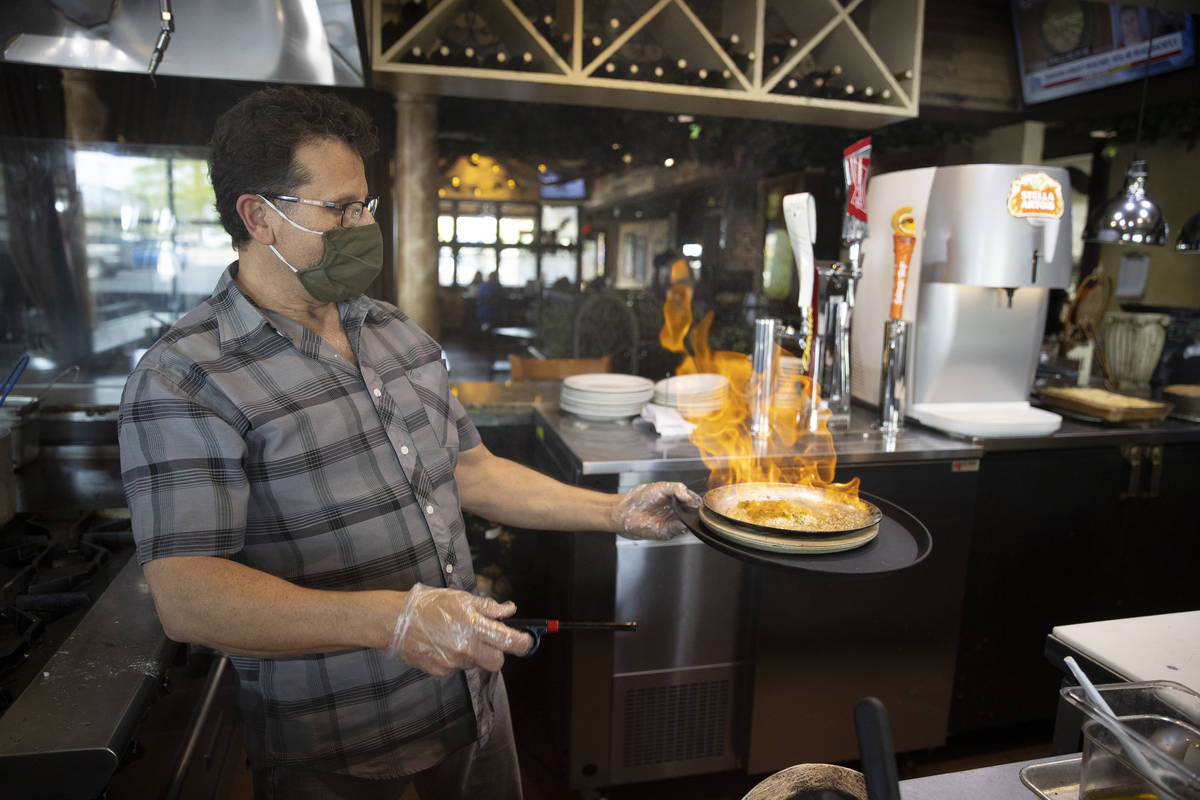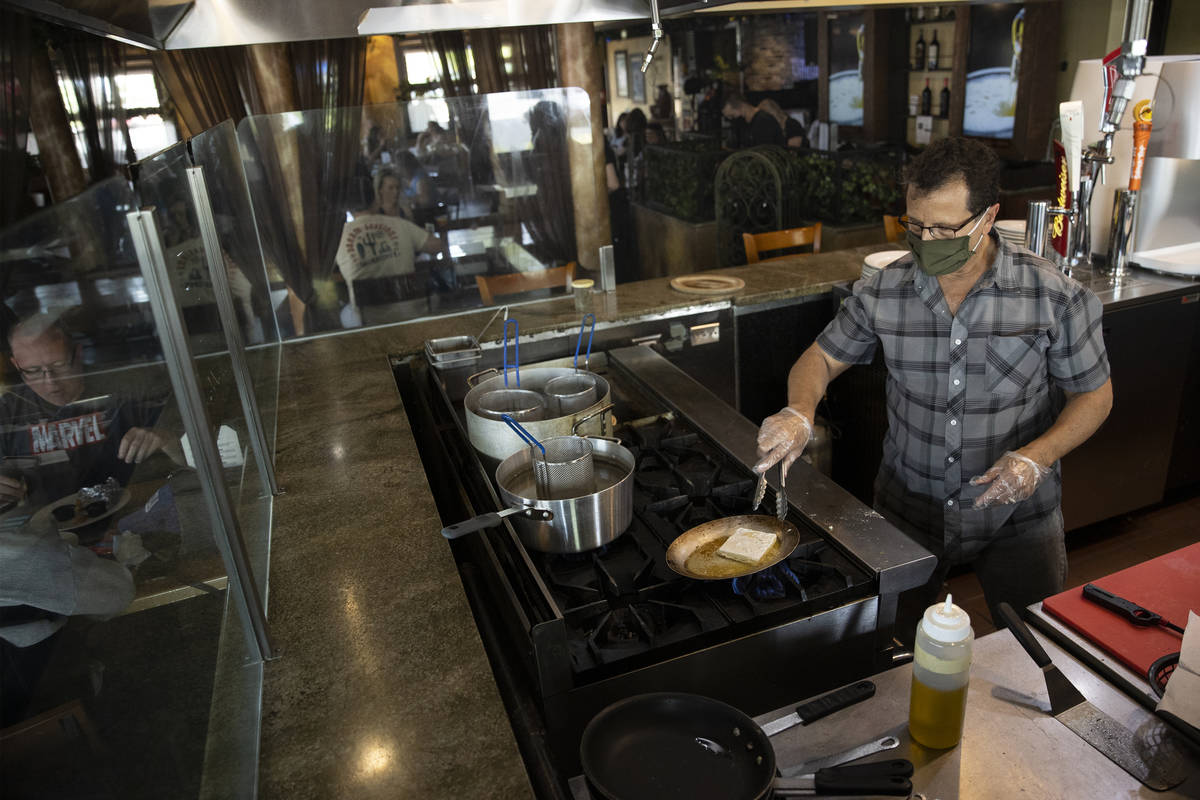Labor shortage may lead to long waits at favorite restaurants
Just over a year ago, restaurant owners beset by a shutdown, looming capacity restrictions, social-distancing requirements and other measures necessitated by the pandemic faced the often heartbreaking task of laying off many of their employees.
Times certainly have changed.
“It’s been very challenging in every position to find people who are ready and available to work,” said Matthew Silverman, managing partner of JRS Hospitality, which has six local restaurants including Hexx and Beer Park at Paris Las Vegas and Cabo Wabo Cantina at the Miracle Mile Shops.
The problem, which Silverman said has been hindering hiring for about three months, is not unique to Las Vegas.
“It’s all over the country,” celebrity chef Thomas Keller said.
Hudson Riehle, senior vice president for research for the National Restaurant Association, said in a statement that a study by the association backs up the conventional knowledge. In January, 7 percent of restaurant operators rated recruitment and retention as their top challenge, Riehle said, but by March, the number had risen to 25 percent.
Joe Pierro, owner of the Market Grille Cafe, said the situation has become so dire that he began closing his Durango Drive location on Mondays and his Lake Mead Boulevard spot on Sundays and Mondays. Plus, he is closing the latter at 4 p.m. Tuesdays through Thursdays. When the shutdown hit, the Lake Mead location had 17 employees for a six-day-a-week operation, Pierro said. He now is down to seven. When a cook recently called in sick, Pierro couldn’t open that day at all, and, “I’m that guy who has always said, ‘If our doors say we’re open until 9 o’clock, you’d better seat until 9 o’clock.’ ”
We’re not hurting for customers,” Pierro said, adding that often he will have 10 to 12 open tables but has to tell arriving customers there is a 20- to 30-minute wait because he doesn’t have the staff to serve them. He has advertised widely and he has resorted to offering cash bonuses to employees to encourage them to help recruit workers — to no avail.
The situation is due to worsen, Pierro said, as capacity limits shift to 80 percent, with 3-foot social distancing, on May 1 and to 100 percent capacity on June 1.
“I’m celebrating for the world that we’re going to open to 100 percent, but for my personal situation, that’s not going to make much difference,” he said.
Silverman agreed.
“I think it will affect everybody,” he said. “We can only do as much volume as we have employees to serve.”
“We’ll probably get to 75, 80 (percent) at the most,” said Juan Vazquez, owner of Juan’s Flaming Fajitas on Tropicana Avenue and on Water Street in Henderson. Vazquez said that while his front-of-the-house staffing is adequate, the kitchen is understaffed.
What’s causing the shortage?
It’s a combination of factors, said professor Jeff Waddoups, chairman of the Department of Economics at UNLV.
“The shutdown was so stark and it lasted long enough that employees just started doing something else,” Waddoups said. “I think that’s the real problem — that employees got to the point where they figured out another way to make ends meet without having to go to work at the restaurant. So that’s the real problem — that people change their patterns.”
That’s the case with Jill Shlesinger, who was general manager of a cocktail bar and quick-serve cafe at the Forum Shops at Caesars when the shutdown came. A few months later, she was told that the business had been sold, putting her out of a job.
“I’ve applied for many general-manager jobs, and with 11 years on my resume, people just aren’t biting,” said Shlesinger, who added that at the time, capacities and job opportunities still were limited.
To fill her time at home, she started baking — a lot. She has polycystic ovarian syndrome, and her physician recommended a keto diet.
“I was just baking like crazy to kind of support my own cravings,” she said. Shlesinger also would drop some off to members of her friend group who were exchanging care packages.
“The feedback was overwhelming,” she said. “When one of my girlfriends found out that I had lost my job, she said, ‘That’s it; this is the moment. It’s going to be an unbelievable success. People need products like this.’ ”
So Shlesinger quit looking for a job, and she and her husband started planning. She isn’t inclined to start searching now.
“We’re super-deep into debt over a bakery we’re building,” she said. “We put everything we did and didn’t have into it.” Starburst Parlor Keto Bakery is expected to open in the center at Charleston Boulevard and Rancho Drive in the next few months.
While the retail sector has been suffering and jobs aren’t plentiful there, other opportunities have opened up across the valley.
“The entry-level jobs in restaurants don’t require much in the way of formal skills; it’s learning by doing on the job,” Waddoups said. “There’s been a big increase in workers for warehouse and fulfillment centers because people are buying stuff online a lot. If you were a restaurant worker and you had a job doing this other thing, at least some of them are not going to go back. Because the hours in restaurants are insane. At least some of them are going to say, ‘Wow, I’m glad I got out of that racket.’ ”
“Maybe they had a point of reflection in their life and they want something with more stability or want something different and this is the opportunity to make that transition,” said Joseph Lema, professor and chairman of the food and beverage and event-management department at UNLV.
Others maintain that increased unemployment and stimulus-pay programs have encouraged would-be workers to stay home.
“When I have conversations (with other restaurant owners), it’s felt that it’s because of the unemployment benefits,” Pierro said.
“I think that’s the easy one,” Silverman said, “but I don’t know if that’s true” — and indeed, a study last summer by Yale University economists found that those receiving increased unemployment benefits returned to their previous jobs “at similar rates as others.”
“You’ve got a combination of things,” Lema said. “Those high unemployment benefits, child care, and the uncertainty with the vaccine, and safety.”
Plus, he said, with the massive Resorts World planning to open, there is even more of a demand.
‘Underpaid and overworked’
“Operators are returning to pre-pandemic recruitment techniques for hiring,” Riehle said. “These include higher hourly pay rates, additional benefits and professional development opportunities, among others.”
Tom Kaplan, senior managing partner of the Wolfgang Puck Fine Dining Group in Las Vegas, said it may be time for the industry to look inward.
“For our industry, I think it’s actually good,” he said. “Across the United States (the industry’s) had its own reckoning because a lot of employees have been underpaid and overworked. I think we’re going to have to be cognizant of some of the competing industries.
“It is going to change the outlook here in the city, and the employee will get higher hourly wages.”
His group already is paying $1 to $5 an hour more for certain positions than just a few months ago, Kaplan said, to stay competitive.
“And I don’t think that’s wrong,” he said. “A livable wage is hard to meet for some people.”
Another upside, Lema said, is that employees are being cross-trained out of necessity and may have more chance to move up.
“This is such a big benefit for the employer because now they have somebody who can do several positions,” he said.
Waddoups and Lema said the competitive market for employees also may lead to an increased reliance on technology for those operators who can afford it. During a recent sabbatical in Australia, Waddoups said he noticed much more use of automation.
“There may be fewer restaurants that use workers,” he said. “Only the highest-end restaurants in Australia had someone come to your table and serve you. I think there may be more of that kind of thing emerging.”
Kaplan is optimistic that the end is in sight.
“I think this is the short term, maybe a month or two,” he said, with the effect more noticeable because of the impending return to full capacity. “I think it’s opening the floodgates and everybody’s looking for workers,” he said.
“I do know some people who have left the industry forever, but that’s a small number,” Silverman said. “I really don’t know. I wish I did because then I could come up with a solution to try and fix it.”
Contact Heidi Knapp Rinella at Hrinella@reviewjournal.com. Follow @HKRinella on Twitter.
Review-Journal staff writer Al Mancini contributed to this story.



